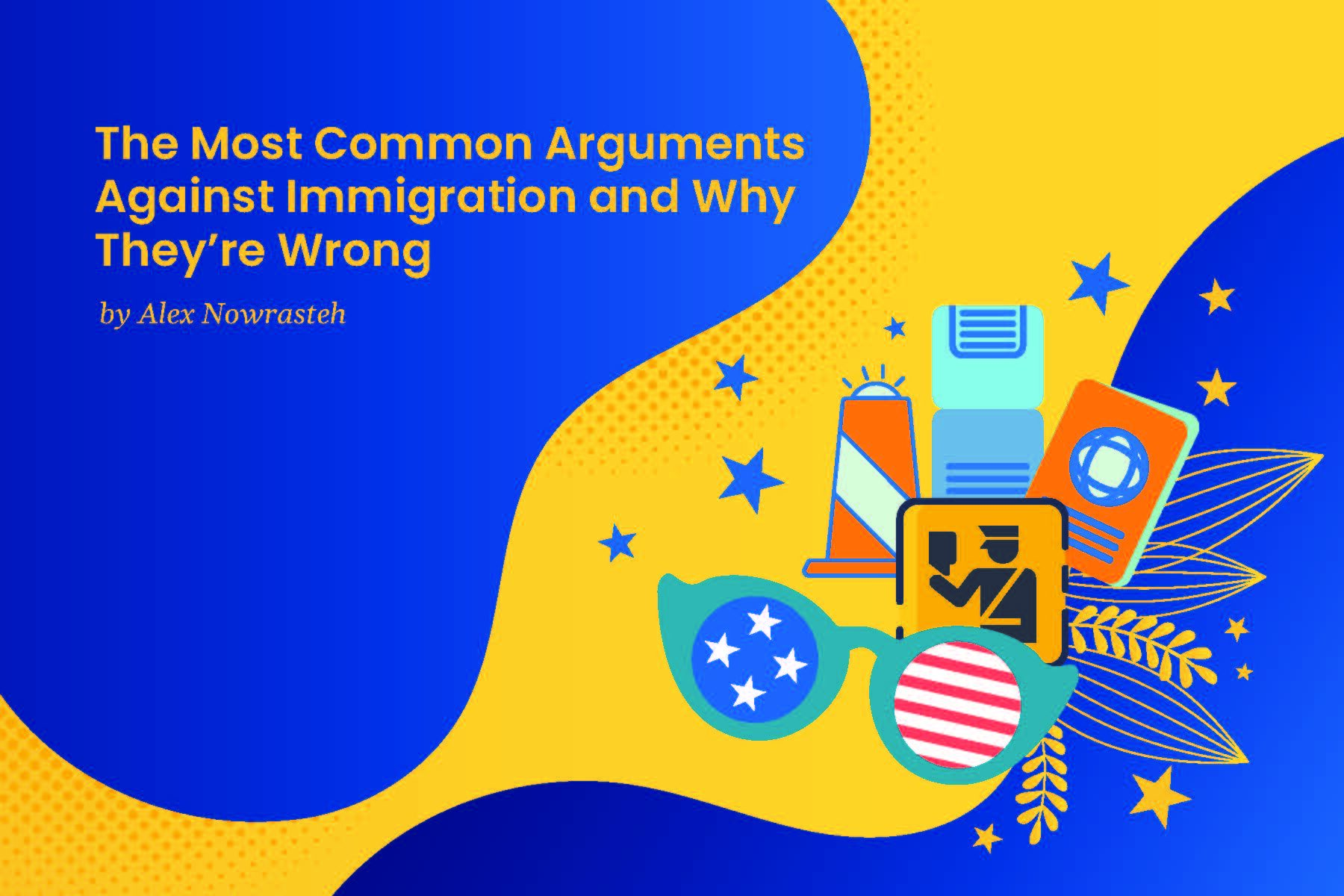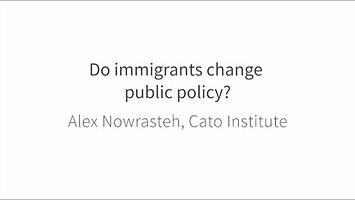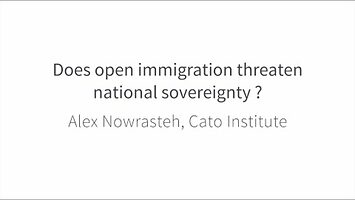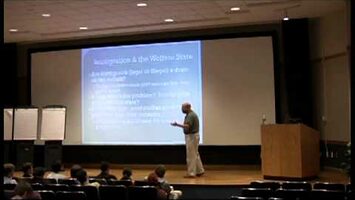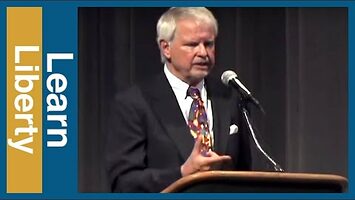Immigration
Encyclopedia
Immigration is the movement of people from one country to another where they are not native. Since the beginning of history, men and women have been crossing political borders to better their economic condition, reunite with their families, and escape the dangers they faced in their country of origin. In the late 1990s, an estimated 130 million people, or about 2% of the world’s population, were living outside the country in which they were born. About 10% of these immigrants were refugees forced from their homes by war, persecution, or natural disaster. Immigration has played an important role in the settlement and development of the United States and, indeed, of the whole New World. Its defenders argue that not only does immigration enhance the freedom and well-being of those who have moved to their adopted country, but it also has benefited its natives by stimulating the economy and enriching the culture. Opponents claim that immigrants compete with native workers, thus lowering wages, and fragment the traditional culture. Throughout history, freedom to travel and immigrate has been closely tied to freedom of commerce. In medieval England, immigration was seen as a basic right. Chapter 41 of Magna Carta asserts that, “All merchants shall have safe and secure exit from England and entry to England, with the right to tarry there and move about as well by land as by water, for buying and selling by the ancient and right customs.”
Throughout history, states that were the most open to trade and new ideas, such as Venice and the Dutch Republic, also tended to be the most open to immigrants. As trade and economic liberalization expanded in the 19th century, so, too, did immigration. The late 19th century, in particular, saw mass migrations from Europe to the Americas, Oceania, and Asia. The bulk of this immigration, however, was directed at the United States. The increased immigration of this era was spurred by the introduction of the steamship, which dramatically reduced the cost and risk of ocean travel, and by industrialization, which created new demands for labor that were met, in part, by voluntary, large-scale immigration. With few exceptions, governments allowed the free movement of people across borders during most of this period. In the century ending in 1920, 60 million people left Europe, three-fifths of whom came to the United States. The other major destinations of European immigration were Canada, Australia, New Zealand, South Africa, and Argentina. During this same period, millions more left China, India, and other Asian countries, moving to East and Southern Africa, and nations surrounding the South China Sea, such as Malaysia and Indonesia, and, to a lesser extent, to the Americas. Economist J. Bradford DeLong of the University of California at Berkeley estimates that, by 1870, about 1 out of 10 people in the world lived in a country other than the one of their birth, five times as many as today. After the First World War, however, restrictions against immigration became more widespread, particularly in the United States. Motivating those restrictions were populist concerns that immigrants harmed natives by driving down wages, posed a national security threat, diluted native culture, and were of “inferior” racial or ethnic stock. Today, even as a growing number of nations are lifting barriers to international trade and investment, immigration remains far more tightly controlled than a century ago.
The United States is a nation founded by immigrants. Among the long train of abuses of which the Founding Fathers accused King George III was that he “has endeavored to prevent the Population of these States” by “obstructing the Laws for Naturalization of Foreigners” and by “refusing to pass others to encourage their Migrations hither.” Between 1820 and 2001, 67 million immigrants officially entered the United States. The first wave of European immigrants to what is now the American colonies were from Great Britain, followed by a rising number from Germany in the later 18th century. Not all immigrants came willingly. From the early 1600s to 1820, about 8 million Africans were forcibly transported to the New World under indescribably squalid conditions to be sold into slavery. Immigration of all kinds was relatively attenuated from the period of American independence until the 1840s. At that point, the Irish Potato Famine of 1846–1847 was attended by the immigration of no less than 1.7 million Irish to the United States in the 1840s and 1850s, more than one-fifth the population of that island. Irish, German, and Scandinavian immigrants predominated through about 1890, to be eclipsed by Italians, Austro-Hungarians, and Russians during the Great Migration of 1900–1914. Immigration during this period was virtually unrestricted. Entrants were screened only for contagious diseases and obvious mental deficiencies at such facilities as Ellis Island in New York City. The only exception to free entry until then had been the Chinese Exclusion Act of 1882, a piece of clearly racist legislation, which virtually barred the immigration of Chinese laborers. After World War I, growing anti-immigrant sentiment led Congress to place quotas on immigrants based on the proportion of the population represented in the 1910 Census. This effort excluded almost all Asians and culminated in the Johnson–Reed Act of 1924, which favored immigrants from Northern Europe through a national-origins quota system. In the 1930s, the United States, Canada, and many Western European nations refused to accept Jews fleeing Nazi persecution.
These immigration regulations remained essentially unchanged until 1965, when Congress scrapped racial quotas in favor of a system that allocated visas more uniformly across nations, with a cap on total annual immigration. Since then, total annual legal immigration has been steadily rising, especially from Asia and Latin America. Although equal in absolute numbers to the first wave of immigration a century ago, currently, the number of immigrants is significantly smaller relative to the total U.S. population. The United States in the 1990s allowed entry to approximately four immigrants a year per 1,000 U.S. residents, compared with 10.4 per 1,000 during the peak of the Great Migration in 1901–1910. By 2000, about 11% of the U.S. population was foreign-born, compared with the previous peak of 14.7% in 1910.
Almost all legal immigrants entering the United States today fall into one of four categories. By far the largest comprise family members, who account for about two-thirds of the annual inflow. An American citizen may legally sponsor a spouse, child, parent, or sibling, whereas noncitizen residents with a work permit (known as a green card) can sponsor a spouse or child. The second largest category is employment-based immigration. U.S. law reserves about 140,000 green cards a year for immigrants hired to fill specific jobs by American companies. (Highly skilled foreign-born workers also can enter the country through temporary nonimmigrant visas.) In addition, in a typical year, the United States admits about 100,000 refugees and asylum seekers fleeing from war, persecution, or natural calamities in their home countries. Refugees are given approval before they enter the United States, whereas those seeking asylum enter the country first and then declare to authorities that they are fleeing persecution. Another 50,000 immigrants are issued green cards each year through a lottery system.
Advocates of immigration contend that newcomers stimulate the domestic economy by starting businesses; discovering new ideas, products, and production methods; and filling jobs that natives cannot or will not perform. Indeed, there appears to be no systematic evidence that immigration reduces the general wage level or raises unemployment among natives. Because immigrants tend to arrive at the beginning of their prime working years, they keep the nation demographically younger and actually reduce the dependency ratio of nonworkers to workers. Moreover, immigrants enrich the culture by diversifying the nation’s art, folk traditions, and culinary choices. The large majority of immigrants, and virtually all of their children, have successfully assimilated into American society, learned the language, and absorbed American social and civic values. Even more important, free movement is among the basic rights of mankind. An immigrant who engages in private, voluntary contracts for work, housing, and other provisions is not violating the basic rights of any other person. Indeed, by restricting immigration, the government also limits the freedom of native-born Americans who are denied the right to hire employees or direct their businesses as they see fit with people from other countries.
Opponents of immigration, especially opponents of the current level of inflow, contend that immigrants harm the economy by taking jobs that Americans would otherwise fill. They claim that immigrants drive down wages by competing with natives for jobs. Immigrants, they maintain, also are more likely to draw public assistance because of their lower incomes. In addition, they fear that the latest wave of immigration is changing the racial and ethnic character of America from a country comprised predominantly of whites of European ancestry to one with not only African American but sizeable Latino and Asian minorities as well. Thus, they view current immigrants as diluting and “Balkanizing” American culture and harboring divided loyalties between the United States and their country of birth. By raising the nation’s population growth rate, immigration allegedly contributes to traffic congestion, air pollution, and crowded public schools. Surely, they argue, every government owns the right to “control its borders.”
Most people who object to immigration, even when not avowedly racist, almost invariably betray a basic misunderstanding of economics. The fact is that, like free trade, immigration expands human liberty by increasing the choices people can make as consumers and producers. A free labor market directs immigrants to where their work is most in demand. Efforts by the government to manage the labor market are as apt to fail as similar efforts to protect domestic industries or orchestrate industrial policy. Any issue of welfare use should be addressed by reducing access to government programs, not by further reducing the liberty of immigrants and the native-born to cooperate for mutual advantage. Indeed, statistics indicate that immigrants take advantage of welfare programs at a rate only slightly higher than do native-born Americans. If an immigrant seeks to engage in peaceful, voluntary transactions that do not threaten the freedom or security of the native-born, the government should not interfere.
Further Readings
Block, Walter. “A Libertarian Case for Free Immigration.” Journal of Libertarian Studies 13 no. 2 (Summer 1998): 167–186.
Borjas, George J. Heaven’s Door: Immigration Policy and the American Economy. Princeton, NJ: Princeton University Press, 1999.
Capaldi, Nicholas, ed. Immigration: Debating the Issues. Amherst, NY: Prometheus Books, 1997.
Handlin, Oscar. The Uprooted: The Epic Story of the Great Migrations That Made the American People. New York: Little, Brown, 1973.
Micklethwait, John. “The New Americans.” The Economist (March 11, 2000): 1–18.
National Research Council. The New Americans: Economic, Demographic, and Fiscal Effects of Immigration. Washington, DC: National Academy Press, 1997.
Simon, Julian L. The Economic Consequences of Immigration. Ann Arbor: The University of Michigan Press, 1999.
———. Immigration: The Demographic and Economic Facts. Washington, DC: Cato Institute and National Immigration Forum, 1995.
U.S. Immigration and Naturalization Service. 2001 Statistical Yearbook of the INS. Washington, DC: U.S. Government Printing Office, 2003.









